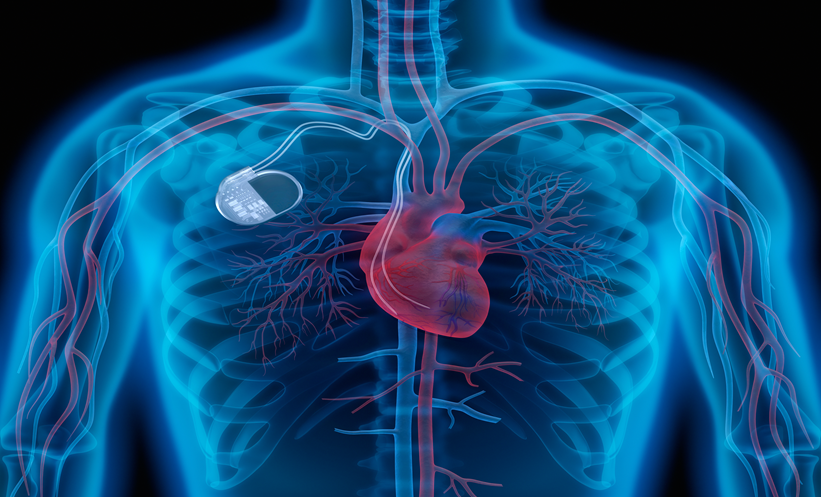BACKGROUND
Transcatheter valve-in-valve (ViV) implantation is a valuable alternative for the treatment of high-risk patients with degenerated bioprostheses. However, post-procedural high gradients are common following aortic ViV surgery and have been associated with increased mortality. We previously reported that small label size of the surgical valve was associated with increased mortality after ViV implantation.1 However, it is unknown whether this association is, at least in part, related to a pre-existent permanent pacemaker (PPM), i.e. PPM of the surgical valve.2 The objective of this study was thus to examine the association between a pre-existent PPM and the occurrence of high post-procedural gradients and mortality survival after aortic ViV implantation.
PATIENTS AND METHODS
The Valve-in-Valve International Data (VIVID) Registry is a multicentre international registry of ViV procedures, which includes different transcatheter heart valve devices and valve positions.3 This registry, which was started in 2010 by Dr Danny Dvir, prospectively collects data from centres in Europe, the USA, South America, Africa, Oceania, and the Middle East. In the study that we presented at EuroPCR 2017 in Paris, France, we reported the results of an analysis of the data of 1,168 patients included in this registry. Pre-existent PPM of the surgical valve was defined using the predicted valve effective orifice area (EOA), which is calculated by dividing the normal reference value of EOA for each given model and size of implanted prosthetic valve by the patient’s body surface area. PPM was then graded using the criteria proposed by VARC-2:4 i) overall PPM: indexed EOA <0.85 cm2/m2 if BMI is <30 kg/m2, or <0.7 cm2/m2 if BMI is ≥30 kg/m2; ii) severe PPM: indexed EOA <0.65 cm2/m2 if BMI is <30 kg/m2, or <0.6 cm2/m2 if BMI is ≥30 kg/m2. The primary study endpoint was 1-year mortality.
KEY FINDINGS
Among the 1,168 patients included in this analysis, 89 (7.6%) had a severe pre-existent PPM and these patients more frequently had high residual post-procedural gradients (mean gradient ≥20 mmHg). Patients with a severe PPM had significantly (p<0.001) higher 30-day (10.3% versus 4.3%) and 1-year mortality rates (28.6% versus 11.9%) compared to patients without a severe PPM. After adjusting for label surgical valve size, Society of Thoracic Surgeons (STS) score, renal failure, and diabetes, the presence of a pre-existent severe PPM remained associated with increased risk of 1-year mortality (odds ratio: 1.77; p=0.04).
CONCLUSIONS AND CLINICAL IMPLICATIONS
A pre-existent PPM of the failed surgical valve is independently associated with higher incidence of post-procedural gradients and with a 2.4-fold increased risk of mortality following ViV implantation. These findings provide strong support for the prevention of a severe PPM at the time of surgical valve replacement. They also emphasise the importance of systematic integration of the assessment of pre-existent PPM in the risk stratification and decision-making processes prior to ViV surgery. This identification of PPM can easily be achieved by calculating the predicted indexed EOA. The risk-benefit ratio should be carefully assessed in patients with evidence of severe PPM. Stent fracture of the surgical valve can be performed with the use of an oversized balloon prior to ViV surgery in these patients. This procedure has been proposed to reduce the detrimental haemodynamic and clinical impact of pre-existent PPM, but it requires further validation. The findings of this study also provide an impetus to manufacturers for the development of surgical bioprostheses with expansible stents.
To conclude, the best mechanic cannot convert a Ford Escort into a Ferrari. Similarly, the best interventional cardiologist cannot change a severely mismatched bioprosthesis into an aortic valve with exceptional haemodynamic performance.








